Vaginal birth - series
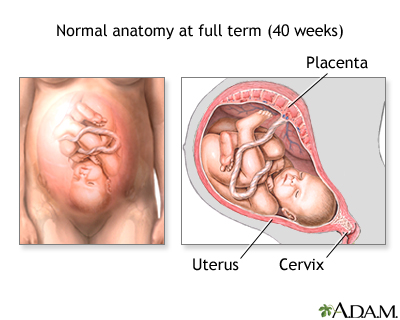
Normal anatomy
This presentation illustrates key stages of a normal vaginal delivery.
Please keep in mind that every birth is unique, and your labor and delivery may be different.
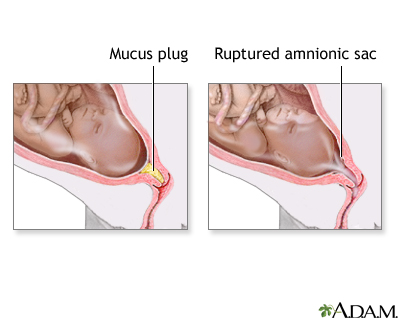
Indications
Your body makes some amazing changes in the days and hours leading up to your baby's birth.
A day or two before labor begins, the mucus plug that sealed off your uterus detaches from the cervix and passes through your vagina. This discharge is sometimes called "bloody show" because it's tinged with blood.
Before labor begins or in the early stages of labor, your amniotic sac may rupture and you may feel fluid trickle or gush out of your vagina. If your "bag of waters" doesn't break on its own, your doctor may rupture it manually.
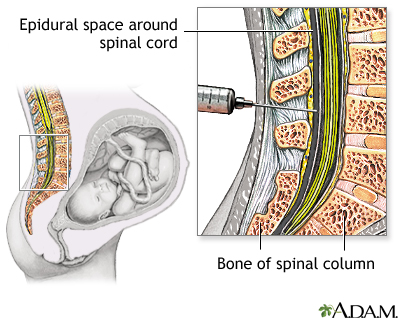
Procedure, part 1
Explore your pain-relief options before you go into labor. Some women aim for a drug-free delivery and rely on various breathing techniques, massage, visualization, hypnosis, and other strategies to ease the pain of labor. Others prefer pain medication or regional anesthesia (such as an epidural, which numbs the lower half of your body).
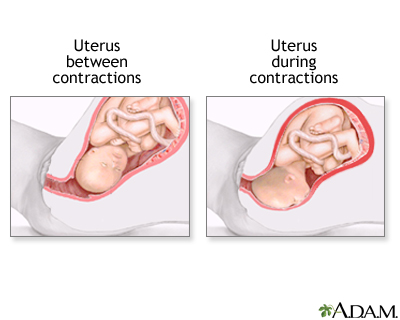
Procedure, part 2
Contractions happen when your uterine muscles involuntarily tighten and relax. When true labor begins, you feel contractions at regular intervals. As labor progresses, these contractions get longer, stronger, and closer together. During active labor, you may feel intense pain or pressure in your back or abdomen during each contraction. You may also feel the urge to push or bear down, though your doctor will ask you to wait until your cervix is completely dilated.
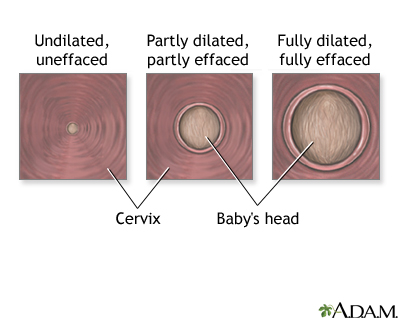
Procedure, part 3
Contractions help your cervix dilate -- or open -- so your baby can pass through the birth canal. You're fully dilated when your cervical opening measures 10 centimeters. As the cervix opens, it also thins (effaces) in preparation for delivery.
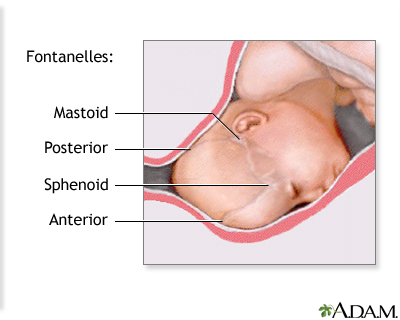
Procedure, part 4
When your cervix is fully dilated, your doctor gives you the OK to push. Propelled by your effort and the force of your contractions, the baby makes his way through the birth canal. The fontanels -- soft spots -- on his head allow it to mold to the shape of this narrow passage. Your baby's head "crowns" when the widest part of it is at the vaginal opening.
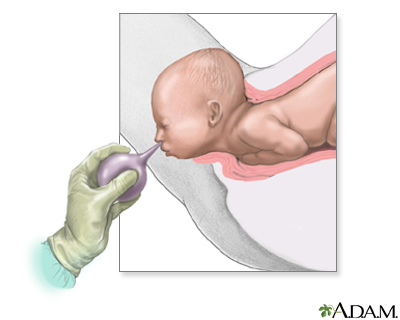
Procedure, part 5
As soon as your baby's head emerges, the doctor suctions amniotic fluid, blood, and mucus from his nose and mouth. More contractions and pushing help deliver the baby's shoulders and body.
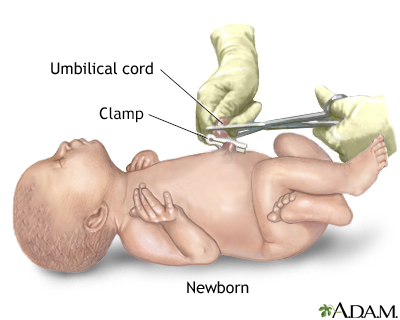
Procedure, part 6
Unless your partner has requested the honor, the doctor clamps and cuts the umbilical cord and examines your newborn.
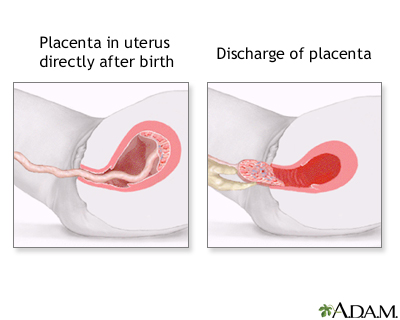
Procedure, part 7
It's not over yet: After your baby is born, more contractions help you deliver the placenta, or "afterbirth."
BACK TO TOP
Review Date: 11/21/2022
Reviewed By: LaQuita Martinez, MD, Department of Obstetrics and Gynecology, Emory Johns Creek Hospital, Alpharetta, GA. Also reviewed by David C. Dugdale, MD, Medical Director, Brenda Conaway, Editorial Director, and the A.D.A.M. Editorial team.

Health Content Provider
06/01/2025
|
A.D.A.M., Inc. is accredited by URAC, for Health Content Provider (www.urac.org). URAC's accreditation program is an independent audit to verify that A.D.A.M. follows rigorous standards of quality and accountability. A.D.A.M. is among the first to achieve this important distinction for online health information and services. Learn more about A.D.A.M.'s editorial policy, editorial process and privacy policy. A.D.A.M. is also a founding member of Hi-Ethics. This site complied with the HONcode standard for trustworthy health information from 1995 to 2022, after which HON (Health On the Net, a not-for-profit organization that promoted transparent and reliable health information online) was discontinued. |
The information provided herein should not be used during any medical emergency or for the diagnosis or treatment of any medical condition. A licensed medical professional should be consulted for diagnosis and treatment of any and all medical conditions. Links to other sites are provided for information only -- they do not constitute endorsements of those other sites. © 1997- 2024 A.D.A.M., a business unit of Ebix, Inc. Any duplication or distribution of the information contained herein is strictly prohibited.
